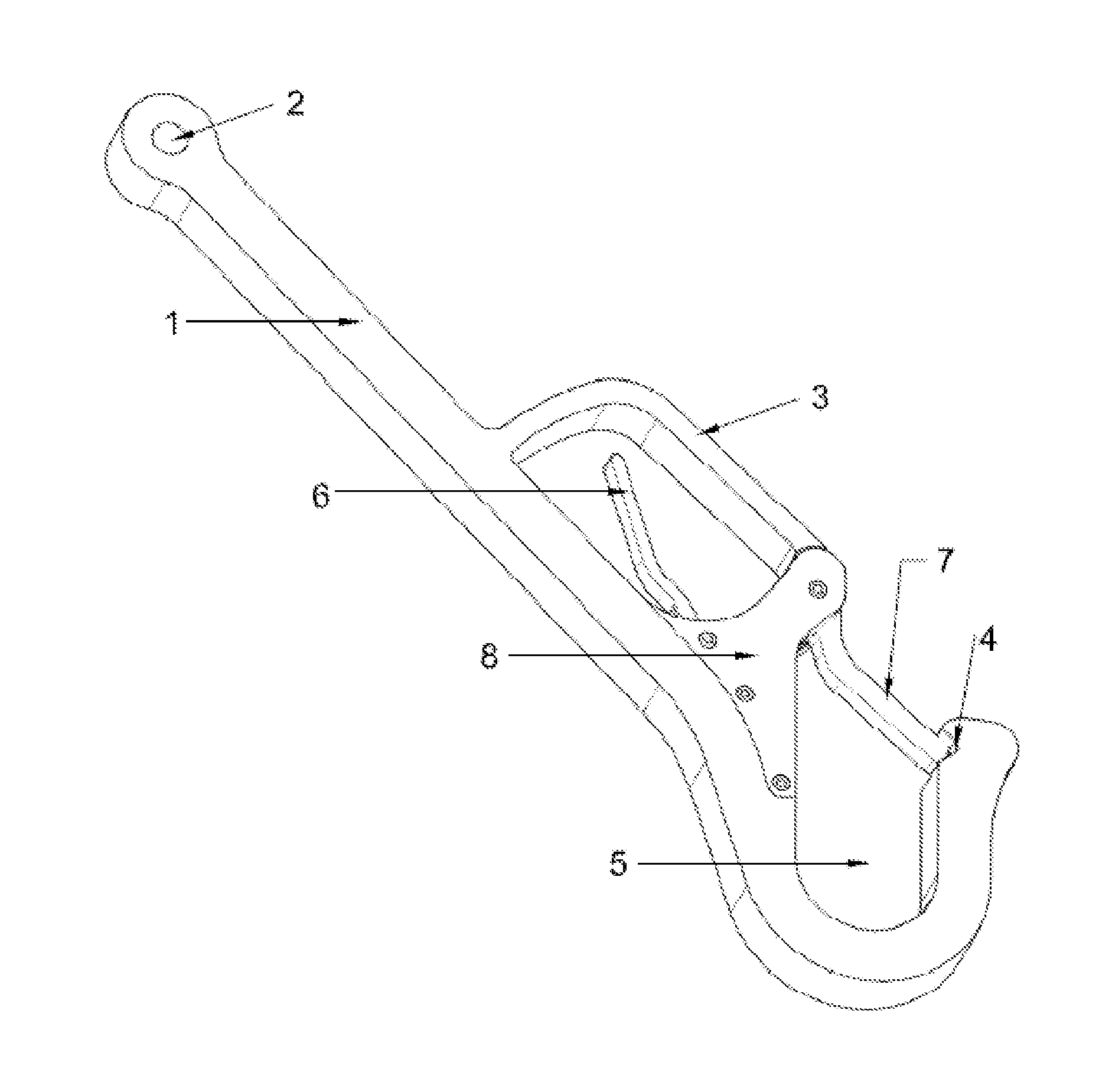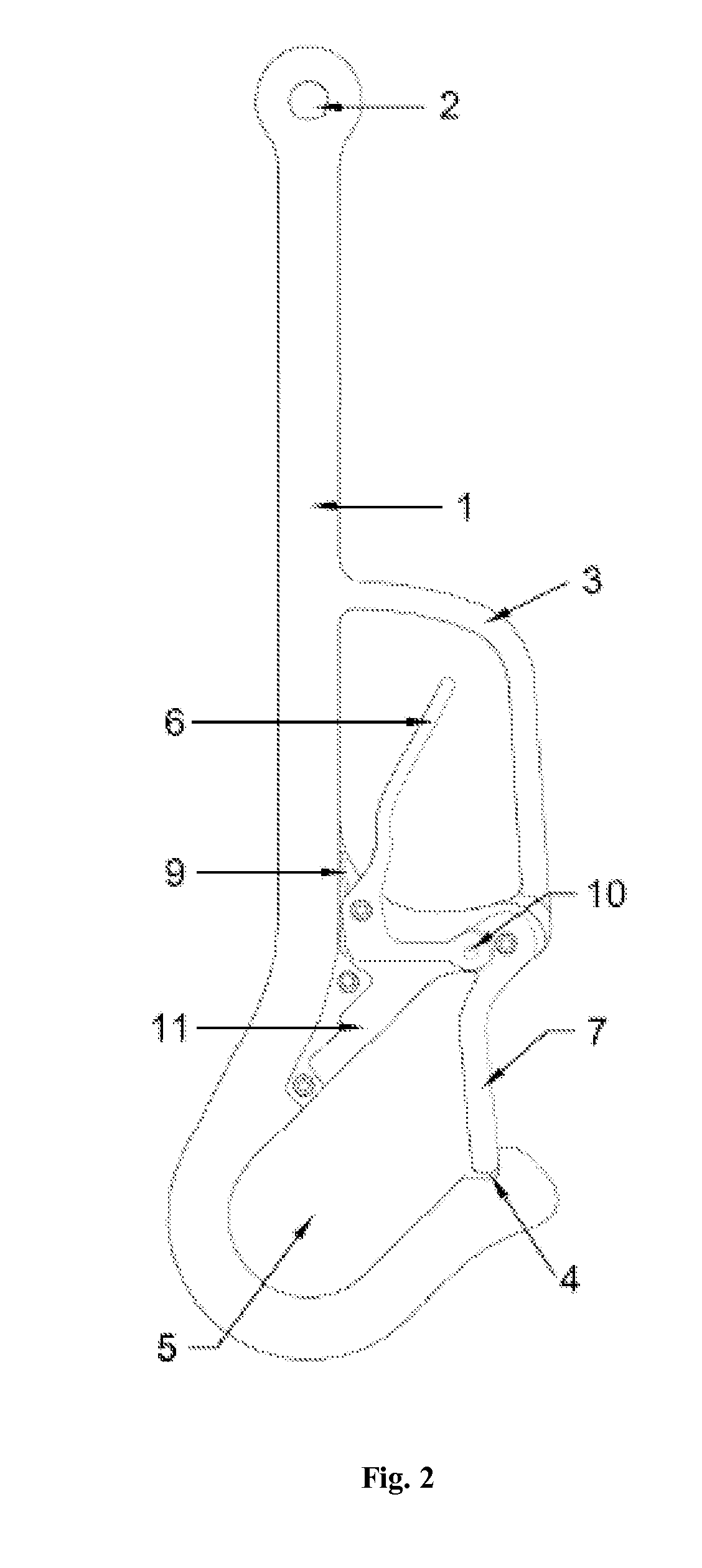Safety latching lifting hook
a safety latching and lifting hook technology, applied in the direction of hook fasteners, load-engaging elements, fastening means, etc., can solve the problems of allowing the load to be released from the hook prematurely, and current lifting hook strategies have only limited success, so as to increase the safety factor, the effect of being safe and easy to us
- Summary
- Abstract
- Description
- Claims
- Application Information
AI Technical Summary
Benefits of technology
Problems solved by technology
Method used
Image
Examples
Embodiment Construction
[0022]Disclosed herein is a mechanical hook device. The numerous innovative teachings of the present invention will be described with particular reference to several embodiments (by way of example, and not of limitation).
[0023]The hook type assembly in accordance with the present disclosure is shown in FIG. 1 and represents the pipe hook design with the main body 1 currently being cut out of a steel plate. A wire rope line is connected to the pipe hook at the attachment point 2 with a clevis or other attachment means. The wire rope line is utilized to raise, lower and transport the pipe to its required position. The hook design provides for the latch 7 to be held against the hook stop 4 by a torsion spring which keeps the pipe secured in the hook area 5 which is pipe size specific. The trigger 6 retracts the latch 7 allowing the pipe to be loaded (hooked) into the hook area 5, or to be released (unhooked) from the hook area 5. The trigger 6 is protected by the trigger guard 3 which ...
PUM
 Login to View More
Login to View More Abstract
Description
Claims
Application Information
 Login to View More
Login to View More - R&D
- Intellectual Property
- Life Sciences
- Materials
- Tech Scout
- Unparalleled Data Quality
- Higher Quality Content
- 60% Fewer Hallucinations
Browse by: Latest US Patents, China's latest patents, Technical Efficacy Thesaurus, Application Domain, Technology Topic, Popular Technical Reports.
© 2025 PatSnap. All rights reserved.Legal|Privacy policy|Modern Slavery Act Transparency Statement|Sitemap|About US| Contact US: help@patsnap.com



